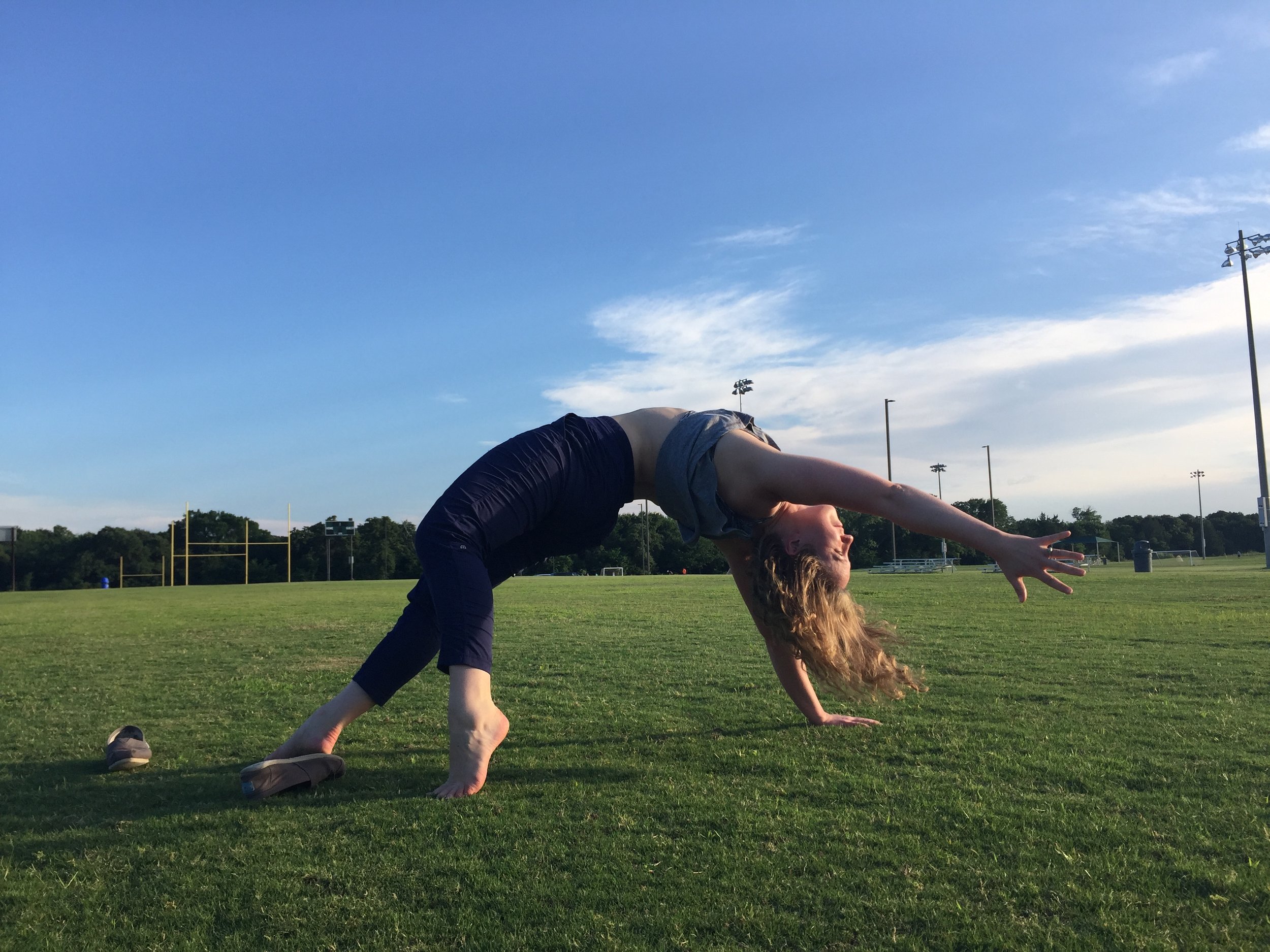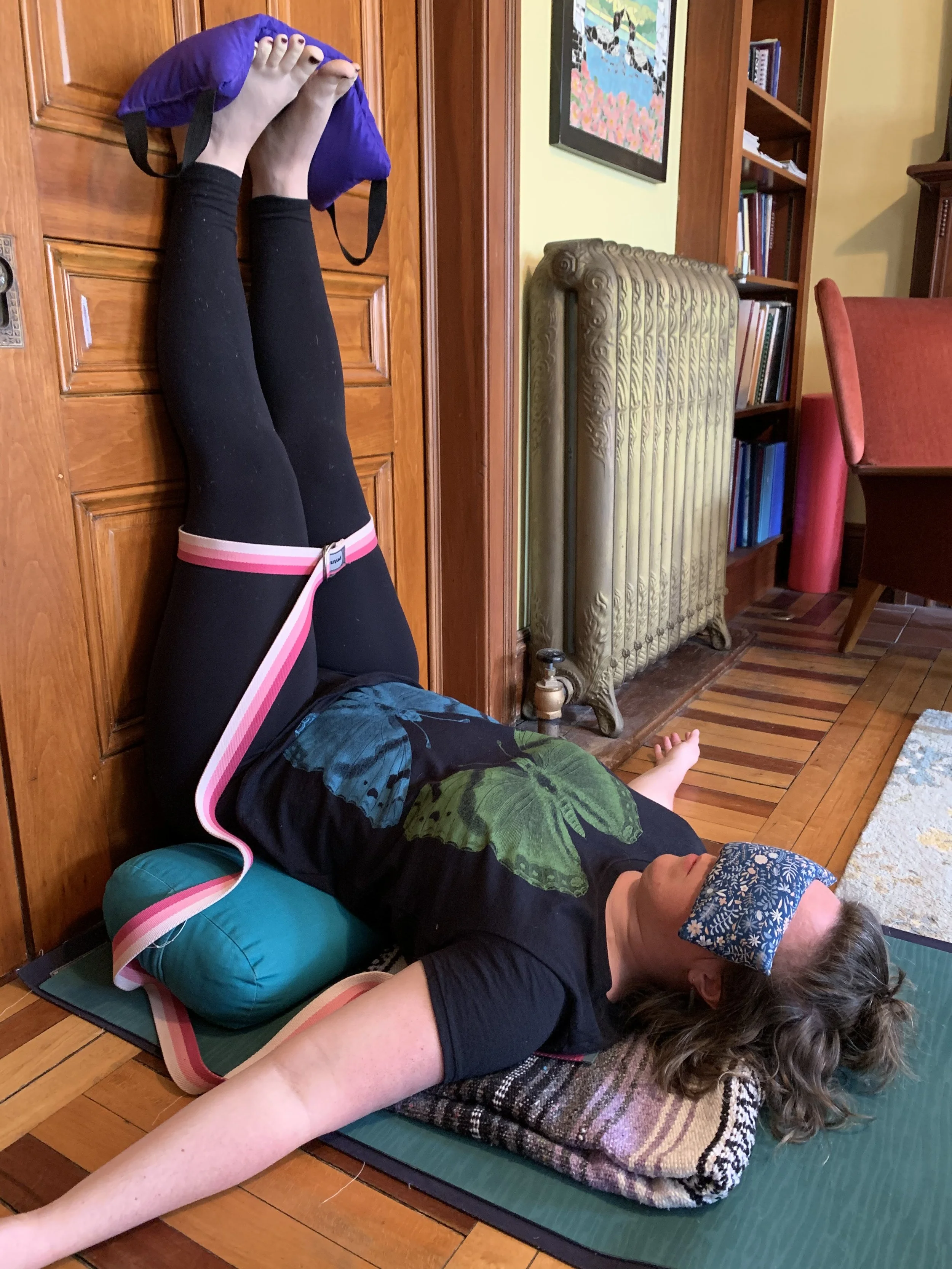What is Form & Flow?
by Lindsay Pope
Form & Flow is our most taught class at Sanctuary, and yet you might be wondering what exactly you are getting into when you take this style of class! The name hearkens back to the days when Sanctuary (then called Yoga Sanctuary) was an Anusara yoga studio. Anusara was founded in 1997 by John Friend; his style integrated physical principles of alignment often found in Iyengar classes with yoga therapeutics and Tantric spiritual teachings. Anusara was very popular in the early 2000s, until John Friend was outed for horrific misconduct. At this point, Yoga Sanctuary divorced itself from Anusara as an organization, and began welcoming yoga teachers from diverse lineages.
I think that John Friend’s fall from grace has allowed the lineage of Anusara, particularly the beneficial parts, to be carried on by caring, heart-centered teachers, while the parts that were born of patriarchy and greed to fall away. What attracted me to this style initially was its specific alignment cues that helped my posture and functional movement. But what kept me coming back was the weaving of spiritual teachings and yogic stories into the practice, enlivening my asana practice to be so much more than movement. Now I also do my best to incorporate breathwork and meditation into my classes. For me, there needs to be a balance between the physical practice and the felt sense of my body in the room, the presence that I cultivate. If I am thinking too much, I lose that connection.
Now we have teachers at Sanctuary who teach Form & Flow in their own way. Some incorporate a theme, some do not. Some classes invite a vinyasa practice (motion with breath), while others offer a long restorative sequence or longer postural holds. What connects these classes is the honoring of each teacher’s lineage, an attention to physical alignment cues, an invitation to use props to support your practice, and an honoring of your inner sacred landscape.
Here are other teacher’s contributions to the question, What is Form & Flow?
When people ask, I mention that Form & Flow is similar to what is usually labeled as a Vinyasa/Vinyasa Flow class. You’ll often find the ability to really come into your breath and synchronize to each posture, creating that continuous flowing practice. I like to think of Form & Flow as a strong and grounded practice with almost dance like movements. My Form & Flow classes start with grounding/centering, followed by a warm up, the flow, then some cool down and closing postures before a lengthy savasana (10 mins).
Fran Astino
Form and Flow is an opportunity to breathe and move in community. Often incorporating elements of a vinyasa practice, Form and Flow links movement to breath, creating a kind of meditation in motion. Form and Flow provides opportunities for both new and experienced students of yoga to connect with their body, adjusting their practice to what feels right for them in the moment. This practice incorporates a mix of standing postures, restorative shapes, and pranayama for a full bodied experience. And my teaching always incorporates a theme inspired by yoga philosophy.
Sebastian Merrill
As a Vinyasa-trained yoga teacher, my Form & Flow class is deeply structured around connecting your breath to movement. Every asana transition, every moment of strength-building, or gentle release is guided by an inhale or an exhale. We incorporate balances, steady holds and some restorative poses along with active, powerful, and fluid flows. Students are always encouraged to listen to what feels right for them, in their body, in their mind, in that moment. My personal yoga brand, Listen Deeply Yoga, is dedicated to creating a welcoming and empowering environment with thematic content that focuses on connection, mindfulness, and yogic philosophy.
Hannah Smith
In Form & Flow we build our stamina with mindful pauses in strengthening poses, nourish our flexibility with stretching and flowing sequences, and reconnect deeply to our breath. We focus on healthy alignment in the body, with supportive variations offered for a diversity of experiences and mobilities. We invite students to practice in the complete bodies that they have right now, in their whole selves, welcoming all the broken and beautiful bits together, celebrating the messy glory that is living as an embodied being among other embodied beings. Classes weave in contemplative themes from yoga philosophy and mindfulness lineages, with invitations to take our yoga off our mats and into our real lives and shared world. We strive to honor the roots of yoga, a hugely diverse set of practices rooted in India and South Asia spanning thousands of years and still evolving. We seek to foster connection and community, in our own bodies and with each other and with our whole world.
Ellen Morbyrne


